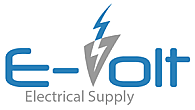The recent announcement of new tariffs between the U.S. and Canada has created uncertainty in the electrical industry. As a Canadian electrician, electrical wholesaler, or manufacturer, you may be wondering how these tariffs will impact your business. This article breaks down what you need to know and how to prepare for potential cost increases and supply chain disruptions.
Understanding the New Tariffs

The United States has imposed a 25% tariff on certain Canadian imports, effective February 1, 2025. While the exact list of affected products is still being finalized, there is concern that electrical supplies, raw materials, and components could see price increases.
At the same time, Canada is expected to impose retaliatory tariffs on U.S. goods. If electrical products or components are included, Canadian companies importing from the U.S. will face higher costs.
How the Tariffs Will Impact Different Sectors of the Electrical Industry
1. Canadian Electricians
- Increased Material Costs: If Canadian electrical wholesalers or suppliers rely on U.S. imports, electricians could see price hikes on essential products such as:
- Electrical panels and circuit breakers (Schneider, Siemens, ABB/GE, etc.)
- Conduit, wiring, and fittings
- LED lighting and fixtures
- Specialty electrical components
- Project Pricing Challenges: Contractors working on fixed-price jobs may struggle to adjust their estimates if costs rise unexpectedly.
- Supply Chain Disruptions: Some suppliers may struggle to secure inventory if U.S. goods become more expensive or if Canadian wholesalers shift to alternative suppliers.
2. Canadian Electrical Wholesalers
- Higher Import Costs: If retaliatory tariffs are imposed on electrical goods from the U.S., wholesalers will need to pay additional duties at the border.
- Potential Supplier Shifts: To remain competitive, wholesalers may start sourcing from non-U.S. manufacturers, increasing lead times and requiring adjustments in product selection.
- Inventory Planning Challenges: With tariffs looming, wholesalers may need to pre-book orders before cost increases take effect.
- Competitive Advantage Over U.S. Distributors: If Canadian wholesalers can find alternative sources, they may gain market share over U.S. competitors who are subject to tariff-driven price hikes.
3. Canadian Electrical Manufacturers
- Rising Costs for Raw Materials: Many Canadian manufacturers rely on U.S. imports for essential components such as steel, copper wiring, and semiconductors. If tariffs increase costs, manufacturers may need to adjust pricing or absorb the losses.
- Export Challenges: If Canadian manufacturers sell electrical products to U.S. customers, their products may now be subject to U.S. tariffs, making them less competitive in the U.S. market.
- Incentive for Domestic Sourcing: The tariffs could encourage a shift toward sourcing materials domestically or from alternative global suppliers.
What Should You Do?
For Electricians:
- Check with your suppliers for upcoming price changes on essential electrical components.
- Consider bulk purchases before prices increase.
- Communicate with clients about potential cost adjustments on projects.
- Look for Canadian-made alternatives to avoid tariff-related price hikes.
For Electrical Wholesalers:
- Review your inventory and supply chain to identify products that could be affected.
- Lock in pricing with pre-booking orders before tariffs take effect.
- Diversify suppliers by exploring Canadian, European, or Asian manufacturers.
- Pass on price changes transparently to customers while remaining competitive.
For Electrical Manufacturers:
- Assess your reliance on U.S. raw materials and explore alternative sources.
- Adjust pricing strategies to account for increased costs.
- Negotiate with suppliers to minimize cost increases.
- Communicate with wholesalers and customers about potential changes in supply and pricing.
Final Thoughts
The evolving trade policies between the U.S. and Canada will undoubtedly impact the electrical industry. While tariffs may lead to cost increases and supply chain shifts, Canadian electricians, wholesalers, and manufacturers who plan ahead, diversify suppliers, and adjust pricing strategies can minimize the disruption.
Stay informed and proactive to ensure your business remains competitive in the face of these changes.

